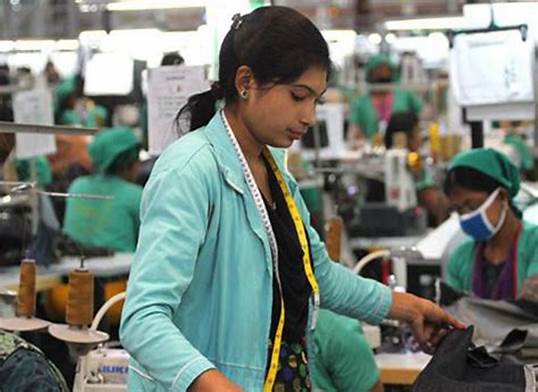Private Firms in India Hold Back on Investment Despite Record Profits
Investments Indian InvestmentsPosted by NewAdmin on 2025-03-27 08:16:29 |
Share: Facebook | Twitter | Whatsapp | Linkedin Visits: 68

India's private sector has long struggled with investing in
new factories and businesses, despite recording impressive profits. This puzzle
has confounded policymakers for years. Since the global financial crisis of
2007, private investment as a share of GDP has steadily declined, even as the
overall economy has posted world-leading growth. After a slight uptick in
investment rates in 2022 and 2023, the most recent data from a major ratings
agency reveals that private sector investment has once again fallen to a
decade-low of 33% of total investments in India’s economy for this financial
year.
Analysis from Icra, based on data from 4,500 listed
companies and 8,000 unlisted firms, shows that while listed companies’
investment pace slowed, unlisted firms saw a decline in investment altogether.
This trend of stagnant private investment has been a concern
for economists over the years. Banking magnate Uday Kotak has recently raised
alarms about India’s fading “animal spirits,” urging young business owners who
have inherited family firms to focus on creating new businesses rather than
merely managing their existing wealth.
Data from investment advisory firm Value Research highlights
that Indian non-financial businesses are sitting on cash worth 11% of their
total assets, further underlining that companies are holding back from fresh
investments. But what’s behind this reluctance?
Several factors are at play, including weak domestic
consumption in urban areas, sluggish export demand, and a surge of cheap
Chinese imports in certain sectors. According to Icra’s Chief Rating Officer, K
Ravichandran, these issues have hindered Indian companies' plans to expand
capacity.
More broadly, the lack of private investment is attributed
to “global uncertainties and overcapacity,” as pointed out by India’s economic
survey earlier this year. A reduction in private investment has serious
implications for India’s long-term growth prospects.
Investment in assets like factories, machinery, and
infrastructure—referred to as gross fixed capital formation—makes up roughly
30% of India’s GDP, making it the second-largest contributor after private
consumption. However, India’s full-year GDP growth is expected to slow to 6.5%,
down from 9.2% last year, largely due to a slowdown in consumption.
With key growth drivers like exports weakening and global
uncertainties heightened by factors such as US President Donald Trump's
tariffs, boosting private investment is critical for India to meet its
long-term growth targets.
According to World Bank projections, India needs to grow at
an average of 7.8% annually over the next 22 years to reach high-income status
by 2047. This will require increasing both private and public investment to at
least 40% of GDP, up from the current 33%.
The government has made substantial efforts to stimulate
investment, including increased spending on infrastructure, cuts to corporate
tax rates, and billions of dollars in production-linked subsidies to
manufacturers. Additionally, access to bank credit is no longer a constraint,
and regulatory restrictions have halved between 2003 and 2020.
Despite these efforts, corporate India has been slow to
increase spending. As Sajjid Chinoy, JP Morgan India's Chief Economist, points
out, the lack of demand in the economy is the main issue. India’s post-pandemic
recovery has been uneven, with the consumer class expanding too slowly to drive
demand for goods and services. This, coupled with falling wages, has further
limited spending, even as corporate profits have hit a 15-year high.
Chinoy emphasizes that just because companies are
financially strong doesn’t mean they’ll automatically invest. They’ll only do
so if they see the potential for strong returns. "Companies will only
invest if they expect good returns," he said at a recent event in Mumbai.
Rathin Roy, a former member of the Prime Minister's Economic
Advisory Council (PMEAC), highlights deeper structural issues. He points out
that entrepreneurs are lacking the energy to create goods that could generate
new demand. For example, despite unsold inventory in urban areas, builders have
been hesitant to expand into tier-two and tier-three towns to tap into new
markets.
Roy also echoes Kotak's concerns about business heirs
choosing to manage wealth rather than build new ventures. "During
Covid-19, business houses discovered that they didn’t need to run businesses to
make money—they could simply invest and multiply their wealth," Roy
explains. Interestingly, much of this money is flowing out of India, seeking
returns in global markets.
However, there are signs of a potential shift. Icra suggests
that interest rate cuts and a $12 billion income tax relief for individuals in
the federal budget could help support domestic consumption. Furthermore,
India’s central bank has noted an increased intention from private companies to
invest this year compared to the last, although the real impact of this intent
remains to be seen.
Global trade uncertainties, particularly related to tariffs, may still delay any anticipated pick-up in investment, according to Icra. The challenge remains for India’s private companies to convert their financial strength into tangible investments in new factories and businesses, which are essential for long-term economic growth.
Search
Categories
Recent News
- Hyderabad Police Swiftly Recovers Funds in APK Fraud Cases
- Hyderabad's War on Extortion: Police Chief's Stern Warning
- Senior Citizens Lose Lakhs in Hyderabad's APK Fraud
- Hyderabad's Firm Stance on Transgender Extortion
- Cyber Scams in India: A Costly Lesson in Online Vigilance
- Hyderabad Intensifies Drug War: Peddlers Face Heightened Scrutiny
- Hyderabad's Trans Community Under Scrutiny for Extortion
- Hyderabad Gears Up for Messi's Magical Visit
Popular News
- Navigating IPO Market Dynamics Amid Volatility and Regulatory Changes
- Innovative Green Practices and Environmental Initiative
- Massive Worldwide Microsoft Outage Disrupts Multiple Sectors
- తెలుగుదేశం పార్టీ - పేదరికాన్ని నిర్మూలించడంలో వాగ్దానం
- Universities Embrace Remote Learning Technologies Amidst Ongoing Pandemic